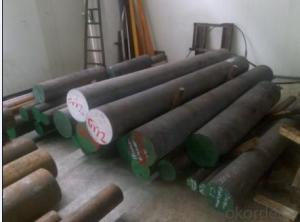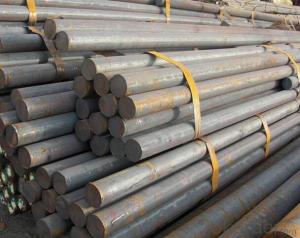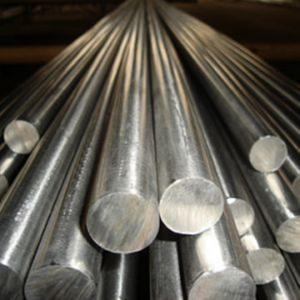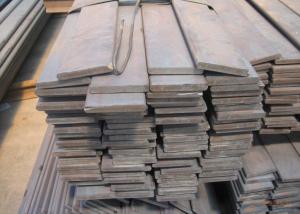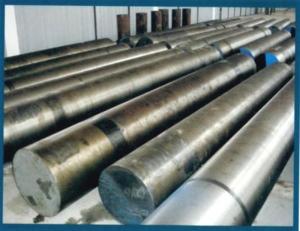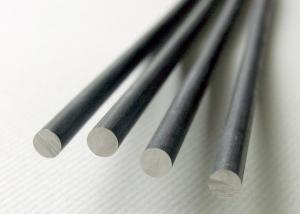Special Steel SCM435 Steel Rod / 4135 Steel Rod
- Loading Port:
- China main port
- Payment Terms:
- TT OR LC
- Min Order Qty:
- 25 m.t.
- Supply Capability:
- 10000 m.t./month
OKorder Service Pledge
OKorder Financial Service
You Might Also Like
Item specifice
The details of our Steel
1. Produce Standard: as the GB, AISI, ASTM, SAE, EN, BS, DIN, JIS Industry Standard
2. Produce processes: Smelt Iron -EAF smelt Billet - ESR smelt Billet -Hot rolled or forged get the steel round bar and plate
3. Heat treatment:
Normalized / Annealed / Quenched+Tempered
4. Quality assurance:
All order we can received Third party inspection, You can let SGS, BV,.. and others test company test and inspect our products before Goods shipping.
Product information
Chemical Composition(%) of 4135 steel rod | C | Si | Mn | P | S | Cr | Mo |
0.33-0.38 | 0.15-0.35 | 0.70-0.90 | ≤0.035 | ≤0.04 | 0.80-1.10 | 0.15-0.25 | |
Specification of 4135 steel rod | Dia.*L=14~200mm*4000~8000mm | ||||||
Application of 4135 steel rod | extrusion dies and die-casting for aluminu m,mandgnesium alloy mostly,for copper alloy could use mechaincal press forging of steel | ||||||
Payment Term of 4135 steel rod | L/C or T/T,30% in advance,70% before the shipment | ||||||
Main product
Plastic Mould Steel
DIN 1.2311,1.2738,1.2083,1.2316 etc.
AISI P20,P20+Ni,420 etc.
JIS SUS420J2
Hot Work Steel
DIN 1.2344,1.2343,1.2367,1.2365,1.2581,1.2713 etc.
AISI H13,H11,H10,H21, etc.
JIS SKD61,SKD6,SKD5,SKT4 etc.
Cold Work Steel
DIN 1.2739, 1.2601, 1.2080, 1.2436, 1.2631, 1.263, 1.2510, 1.2327 etc.
AISI D2, D5, D3, D6, A8, A2, O1 etc.
JIS SKD10, SKD11, SKD1, SKS3 etc.
High Speed Steel
DIN 1.3343, 1.3243, 1.3247, 1.3355 etc.
AISI M2, M35, M42, T1 etc.
JIS SKH51, SKH35, SKH59, SKH2 etc.
Alloy Structural Steel
DIN 1.7035,1.6511,1.7220,1.7225 etc.
AISI 5140, 4340, 4135, 4140 etc.
JIS SCr440,SNCM439,SCM435,SCM440 etc.
Stainless & Carbon Steel or Others
DIN 1.4125,1.1191 etc
AISI 440C,1045, 1020 etc.
JIS SUS440C,S45C etc
Product show

Workshop show
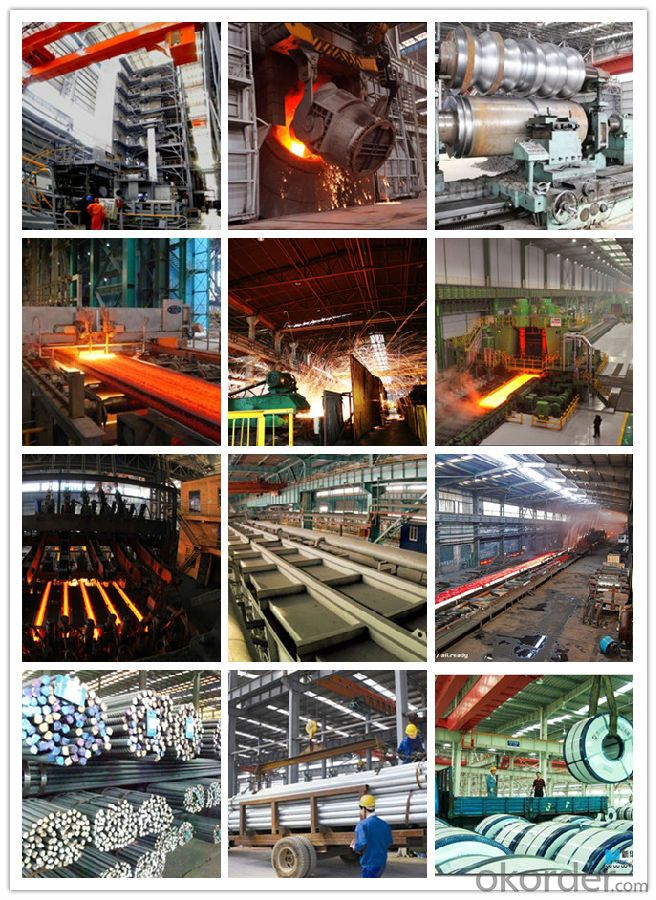
Shipping
1. FedEx/DHL/UPS/TNT for samples, Door-to-Door;
2. By Air or by Sea for batch goods, for FCL; Airport/ Port receiving;
3. Customers specifying freight forwarders or negotiable shipping methods!
Delivery Time: 3-7 days for samples; 5-25 days for batch goods.
Payment Terms
1.Payment: T/T, L/C, Western Union, MoneyGram,PayPal; 30% deposits; 70% balance before delivery.
2.MOQ: 1pcs
3.Warranty : 3 years
4.Package Informations: 1) EXPORT, In 20 feet (GW 25 ton) or 40 feet Container (GW 25 ton)
2)as customer's requirement
Why choose us?
(1) The leading exporter in China special steel industry.
(2) Large stocks for various sizes, fast delivery date.
(3) Good business relationship with China famous factories.
(4) More than 7 years steel exporting experience.
(5) Good after-sales service guarantee.
- Q:What are the challenges in machining special steel?
- Machining special steel can present several challenges due to its unique properties. One of the main challenges is its high hardness, which requires specialized cutting tools and techniques to effectively shape the steel. Another challenge is the tendency of special steel to work harden, making it more difficult to machine as the process progresses. Additionally, special steel often contains alloying elements that can cause increased tool wear and heat generation during machining, necessitating careful selection of cutting parameters to maintain tool life and prevent thermal damage. Finally, the inherent toughness of special steel can also pose challenges in terms of chip formation and control, as well as potential tool breakage. Overall, machining special steel demands expertise, precision, and appropriate tooling to overcome these challenges and achieve desired results.
- Q:What are the different methods for shot peening special steel?
- There are several methods for shot peening special steel, including air blast peening, wheel blast peening, and centrifugal peening. Air blast peening involves directing a stream of shot particles onto the surface using compressed air, while wheel blast peening uses a rotating wheel to propel the shot particles. Centrifugal peening utilizes a spinning wheel to throw the shot particles onto the steel surface. Each method has its own advantages and is used based on the specific requirements of the steel and the desired outcome of the shot peening process.
- Q:What are the factors that affect the mechanical properties of special steel?
- The mechanical properties of special steel are influenced by several factors, including the chemical composition of the steel, the heat treatment process, the presence of impurities or alloying elements, the microstructure of the steel, and the manufacturing process used. Additionally, factors such as grain size, hardness, tensile strength, ductility, and toughness also play a significant role in determining the overall mechanical properties of special steel.
- Q:How does precipitation-hardening steel achieve high strength through heat treatment?
- Precipitation-hardening steel achieves high strength through a process called heat treatment. This involves heating the steel at a specific temperature to dissolve the alloying elements evenly throughout the metal. The steel is then rapidly cooled, forming a supersaturated solid solution. Subsequent aging or precipitation heat treatment allows tiny particles to precipitate out, strengthening the steel. These fine particles hinder the movement of dislocations, enhancing the steel's strength while maintaining its toughness.
- Q:What are the different methods of non-destructive testing for special steel?
- Special steel can be evaluated for quality and integrity without causing damage using various non-destructive testing (NDT) methods. These methods encompass: 1. Ultrasonic Testing (UT): By emitting high-frequency sound waves with a transducer, defects like cracks or voids within the special steel can be detected. The reflections or echoes are then analyzed to identify any anomalies. 2. Magnetic Particle Testing (MT): This technique relies on magnetic fields to primarily detect surface or near-surface defects in special steel. Inducing a magnetic field in the material and applying magnetic particles allows any discontinuities or defects to gather, forming visible indications. 3. Liquid Penetrant Testing (PT): Involving the application of a liquid dye or penetrant to the special steel's surface, this method draws the penetrant into any surface defects through capillary action. After removing excess penetrant and applying a developer, the indications become visible. 4. Radiographic Testing (RT): This technique employs X-rays or gamma rays to inspect the internal structure of special steel. By exposing the material to radiation and capturing the transmitted radiation on film or a digital detector, any inconsistencies or defects within the material become visible on the resulting image. 5. Eddy Current Testing (ECT): Mainly used for detecting surface or near-surface defects, ECT involves inducing an alternating current into a coil to create an electromagnetic field. Variations in the material's electrical conductivity or magnetic permeability caused by defects generate changes in the coil's impedance, which can be analyzed. 6. Visual Testing (VT): While not a direct NDT method, visual inspection serves as a preliminary step to identify surface defects or irregularities in special steel. By thoroughly visually examining the material with appropriate lighting and magnification tools, any issues can be detected. These diverse methods of non-destructive testing offer valuable insights into special steel's quality, ensuring its structural integrity and reliability across various applications. The selection of a specific method depends on factors like the type and location of the defect being sought, as well as the industry or application's specific requirements.
- Q:What are the advantages of using special steel in construction?
- There are several advantages of using special steel in construction. Firstly, special steel offers exceptional strength and durability, making it suitable for high-rise buildings, bridges, and other structures that require long-term stability. Additionally, special steel is resistant to corrosion, which enhances its lifespan and reduces maintenance costs. Furthermore, special steel can be fabricated into various shapes and sizes, allowing for flexible and efficient construction designs. Lastly, due to its recyclability, special steel is an environmentally friendly choice that promotes sustainability in the construction industry.
- Q:How does special steel contribute to the automotive safety?
- Special steel, such as high-strength steel, plays a crucial role in enhancing automotive safety. It is used in various components of vehicles, including the chassis, body structure, and safety systems, to provide superior strength and durability. This type of steel helps improve crashworthiness by absorbing and distributing impact energy, reducing the risk of passenger injury. Additionally, special steel helps optimize the weight-to-strength ratio of vehicles, allowing manufacturers to design lighter yet safer cars that offer improved fuel efficiency and handling.
- Q:What are the factors that affect the corrosion resistance of special steel?
- There are several factors that affect the corrosion resistance of special steel. These factors include the composition of the steel, the presence of alloying elements such as chromium or nickel, the surface finish, the pH and temperature of the environment, the presence of corrosive agents such as acids or salts, and the duration of exposure to corrosive conditions. Additionally, factors such as the design and construction of the structure using the special steel can also impact its corrosion resistance.
- Q:What are the different surface cleaning methods used for special steel?
- There are several surface cleaning methods used for special steel, including mechanical cleaning, chemical cleaning, and electrochemical cleaning. Mechanical cleaning involves the use of abrasive tools or equipment to remove dirt, rust, or other contaminants from the surface. Chemical cleaning involves the use of chemicals, such as acids or solvents, to dissolve or remove contaminants. Electrochemical cleaning utilizes an electrical current to remove contaminants and improve the surface finish. Each method is chosen based on the specific requirements and condition of the special steel being cleaned.
- Q:What are the requirements for special steel used in power generation equipment manufacturing?
- The requirements for special steel used in power generation equipment manufacturing include high strength, excellent corrosion resistance, good thermal conductivity, and the ability to withstand high temperatures and pressures. Additionally, the steel should have low levels of impurities and be able to maintain its mechanical properties over an extended period of time.
1. Manufacturer Overview |
|
|---|---|
| Location | |
| Year Established | |
| Annual Output Value | |
| Main Markets | |
| Company Certifications | |
2. Manufacturer Certificates |
|
|---|---|
| a) Certification Name | |
| Range | |
| Reference | |
| Validity Period | |
3. Manufacturer Capability |
|
|---|---|
| a)Trade Capacity | |
| Nearest Port | |
| Export Percentage | |
| No.of Employees in Trade Department | |
| Language Spoken: | |
| b)Factory Information | |
| Factory Size: | |
| No. of Production Lines | |
| Contract Manufacturing | |
| Product Price Range | |
Send your message to us
Special Steel SCM435 Steel Rod / 4135 Steel Rod
- Loading Port:
- China main port
- Payment Terms:
- TT OR LC
- Min Order Qty:
- 25 m.t.
- Supply Capability:
- 10000 m.t./month
OKorder Service Pledge
OKorder Financial Service
Similar products
New products
Hot products
Related keywords
